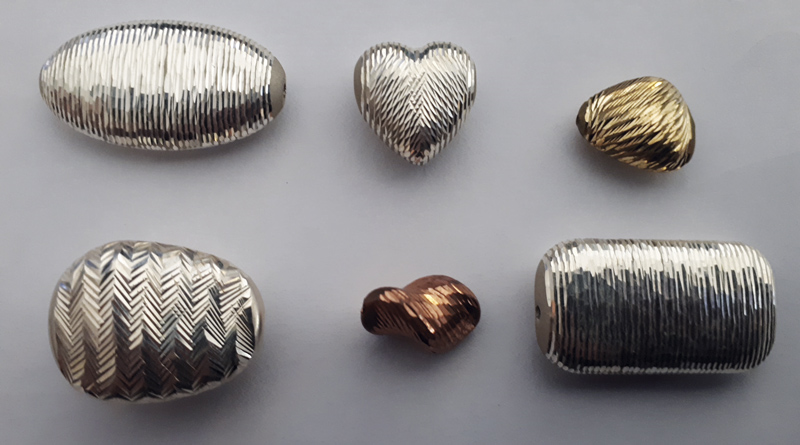This Machine is a Jewel!
Thinking of the jewellery sector, but with the idea of making it suitable also for other production fields, the Vicenza-based company Errea Sistemi has developed a machine for the continuous machining of 3D objects – on display in the Know How 4.0 area at SPS Italia – which relies on two robots capable to achieve a degree of precision typically associated with machine tools. With considerable efforts in terms of research and customization, Mitsubishi Electric has provided not only the robots, servo systems and PLC, but also the complete iQ automation platform.
di Fabrizio Dalle Nogare
The workshop – that’s how Andrea Ciscato and Roberto Bedin, owners of Errea Sistemi, call their company, near Vicenza – may seem at first sight an ordinary mechanical workshop. Just a short chat, however, is enough to see that we are in a place where people search for the full potential of machine automation, without fearing to take risks. The motivation that drives the two technical-entrepreneurs comes out when the microphone is off and Andrea Ciscato tells us that they proceeding along the road traced has never been enough for them. Instead, they have always tried to take a step forward, trying new solutions, something new. The machine they introduce – which is not complete yet, but will be at work, although in a demo version, in the Know How 4.0 area at SPS Italia – is the result of a challenge coming from the jewellery sector, but easily replicable to other sectors. Mitsubishi Electric has promptly accepted the challenge, investing in resources, technology and research. And making possible what seemed to be nearly impossible.
Precision, ease of use and versatility
Relying on the integration of Mitsubishi Electric’s advanced automation systems, Errea Sistemi has developed a machine, the 3D Robot, for the continuous robot machining of 3D objects that ensures very high levels of precision, ease of use and versatility. In fact, the machine is able to adapt to the piece to be processed, not vice versa.
“We started from the requirement of a customer in the jewellery sector to carry out high-precision operations on jewels”, says Mr Ciscato. “However, the machine can be employed in several sectors: from eyewear to healthcare, from watchmaking to the plastic processing. The system makes it possible to automate, with a very high repeatability, operations that are traditionally performed manually and then featured by inefficiencies related to the need to process large several pieces”.
Extremely compact (its footprint is just over a square meter), the machine developed by Errea Sistemi relies on two six-axis robots supplied by Mitsubishi Electric. The first one, with 4 kg payload, picks up the piece from a loader and, equipped with a self-centering gripping system, places it to the workstation where the machining operation takes place. Here, a laser scanner detects the characteristics of the piece and the second six-axis robot, with 7 kg payload, ceiling mounted and equipped with a special tool featured by some components developed and patented by Errea Sistemi, makes it possible to perform the required machining operations. This whole system is actually patented.
If robots behave like machine tools
Completely automatic and with a very short work cycle, the 3D Robot relies on robots for extreme precise machining operations, traditionally associated with machine tools: in the case of jewels, we talk about objects made from sheets with thickness in the order of tenths of a millimeter. “In order to achieve such an extreme precision – not only in handling, but also in the actual machining of the pieces – we had to customize the robots, also involving the technicians of our parent company in Nagoya This is a proof of how much we believed in this project”, explains Marco Filippis, PM Robot, Factory Automation Division at Mitsubishi Electric. “In addition, the iQ automation platform manages the automation of the entire machine with a single hardware: from the robots to the motion part up to the PLC – all components supplied by Mitsubishi Electric – and to the interconnection with the company’s IT system. Data coming from the field can then be easily transmitted to the MES, making it possible to trace the various stages of the work cycle, process data in real time and manage the machine even remotely”. In short, what a machine requires to be “4.0-ready”.
“The possibility to rely on a manufacturer who has not only provided us with the robots, but who has supported us with a complete automation platform allowed us to save time, resources and energy while designing and building the machine”, confirms Roberto Bedin.
Minimizing waste
Flexibility and adaptability are two other keywords in the story of this project, as well as two terms that often occur when it comes to Industry 4.0. Mr Bedin tells us why. “Especially in the case of 3D objects manufactured manually, there are always differences, often imperceptible to the naked eye, between one piece and another. Relying on a machine capable of adapting the working parameters to the physical characteristics of the object is very important, as this allows users to be truly flexible and organize production into batches made up of even different workpieces”.
In addition, among the requirements to be met absolutely at the design stage was a huge reduction of production waste, which are indeed valuable in sectors such as jewellery or eyewear. The word waste, in this case, has a double meaning, as it refers both to possible damaged or faulted pieces and to the material removed during machining. “We may say that nothing is thrown away from the piece: the machine is absolutely airtight because it must contain all the chips to be then completely retrieved”, confirms Andrea Ciscato.
This is indeed another relevant aspect within a collaboration that really, for once, we could define precious without fearing to appear rhetorical.

